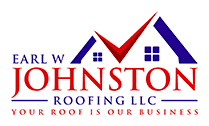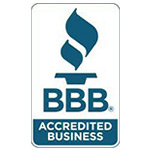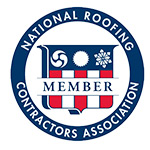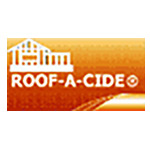As a homeowner, it is important for you to understand the impact of hail on your home, especially your roof. While seemingly brief, hailstorms can unleash a significant amount of damage, leading to costly repairs if not addressed promptly. Earl W. Johnston Roofing delves into the sizes and types of hail capable of damaging roofs and offers insight into detecting and addressing hail damage.

The Impact of Hail Size on Roof Damage
The size of hailstones plays a pivotal role in determining the extent of damage to a roof. Though hail of any size can potentially cause damage, especially to roofs in compromised condition or of certain materials, the risk escalates with the size of the hail.
- Small to Medium Hail (Dime to Quarter Size). While smaller hail may not typically pose a threat to sturdy, undamaged roofs, it can exacerbate the deterioration of older, already weakened shingles, particularly asphalt ones, and speed up the erosion process. Hail in this size range can also inflict damage such as breaking slate tiles or causing tears in asphalt shingles if they are already compromised.
- Large Hail (Larger than a Quarter). Hailstones exceeding the size of a quarter represent a significant risk. They possess the ability to not only damage shingles but also dent metal roofs and break slate tiles upon high-impact collisions. It is advisable to inspect for damage following any storm involving hailstones of this magnitude.
Identifying Hail Damage
Prompt roof evaluation is necessary as soon as a hailstorm ceases. Differences in roofing materials necessitate a tailored approach to detection:
- Asphalt and Soft Tile Roofs. These common roofing materials may show granule loss in gutters, bare spots on shingles where the asphalt base is exposed, or manifest as round or oval dents and cracks attributable to hail impacts.
- Slate Roofs. Despite their durability, slate tiles can be compromised by hail through visible sharp-edged holes, shattered or cracked tiles, and chipped edges, signaling an immediate need for attention.
- Metal Roofs. Metal roofs might endure hail damage in the form of scour marks or dents, which apart from being unsightly, can lead to rust and subsequently weaken the structure.
If the assessment reveals damage, or if you are unsure of your roof’s status, consulting with a professional roofing contractor can provide peace of mind and ensure precise documentation for insurance purposes.
Addressing Hail Damage: Immediate Steps and Considerations
Quick action on your part is imperative when dealing with potential hail damage. If a contractor inspects your roof and finds evidence of hail damage, you can begin filing an insurance claim and documenting the damage extensively. Following an insurance adjuster’s evaluation, decisions regarding repair or replacement can be made, focusing on mitigating immediate risks and planning for long-term resilience.
Get in Touch With Us!
Safeguarding your home begins with awareness and readiness to act when hail strikes. At Earl W. Johnston Roofing, we’re committed to providing expertise and services to help you navigate the aftermath of hailstorms, ensuring the safety and longevity of your roof. Call us today at at (954) 989-7794 to request a quote! You can also reach us online and we’ll get back to you as soon as possible.














